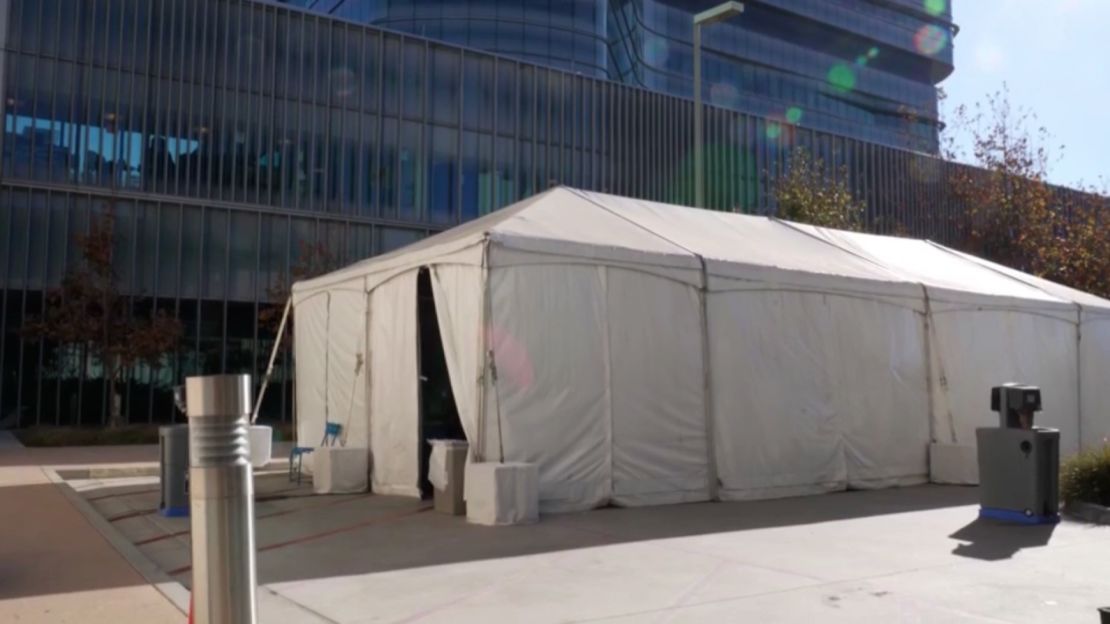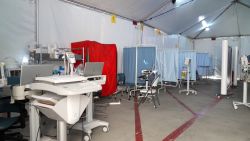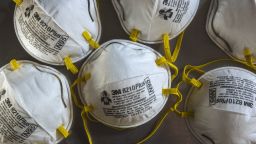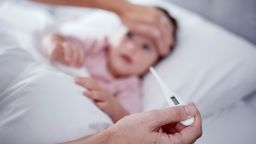Across the country, overflow health care workers are struggling to catch their breath as hospitals fill with sick patients battling a trifecta of respiratory illnesses – Covid-19, RSV and the flu.
“We’ve seen a real increase in cases … particularly since Thanksgiving,” said Dr. Christopher Longhurst, chief medical officer at UC San Diego Health, who added that the hospital is facing a respiratory surge. “Covid is up. The flu is up and other respiratory viruses are up as well.”
The situation is so overwhelming at UC San Diego Health, the hospital had to create space to triage patients by setting up tents in parking lots and using other unconventional spaces. The hallways in the emergency department are also full of temporary beds for patients who were admitted but are awaiting hospital beds.
“We have not had to reconfigure conference room space to care for patients even during the Covid pandemic,” said Longhurst, who explained that UC San Diego Health has experienced an equal number of Covid patients as patients with other respiratory viruses. “These are really unprecedented times.”
Last week, hospitals across the nation were the fullest they have been throughout the pandemic, reaching 80% capacity, which is an 8 percentage-point jump in two weeks. That’s also the highest level since the Omicron surge in January. This week, hospital capacity has improved slightly.
While RSV appears to have peaked in the US, both Covid and flu infections are on the rise.
All but seven states are experiencing high or very high respiratory virus activity, according to the Centers for Disease Control and Prevention. The CDC advises that people in areas with high Covid-19 community levels wear a mask.
Dr. Jeff Smith, executive vice president and chief operating officer for hospital operations at Cedars-Sinai Medical Center in Los Angeles, said the “extreme, rapid rise” of RSV from October into November was likely “the most RSV we’ve seen in the past decade.”
“And now we’ve seen a rapid decline (in RSV),” said Smith. “That has overlapped this Covid rise, which has happened a little bit slower and a little bit later, and then now is superimposed by this very rapid rise in influenza.”

Yet the surge of this virus trio is still not as bad as Covid was during the apex of the pandemic.
“The most powerful factor by far is probably the vaccines, but the other one is the cumulative number of infections we have all had which is now called natural immunity,” said Dr. Edward Jones-Lopez, an infectious disease specialist at Keck Medicine of the University of Southern California.
“Unfortunately, there’s still about a third of the country … where despite all the evidence of safety and efficacy, people are still not getting vaccinated,” he said.
There are vaccines for both Covid and the flu, but not for RSV. All three of the viruses present very similar symptoms – fever, cough and upper respiratory symptoms – so testing is required to determine which illness it is and recommend treatment.
And just because a patient has one virus doesn’t mean they can’t get the other two as well.
“I’ve seen one case of three infections occurring at the same time,” said Jones-Lopez. “These are independent viruses that can infect the same individual and, obviously, the more viruses, the more infections you have … the higher the risk of one of them leading to more serious disease.”
Mask mandates have not yet returned, but virus spikes in New York, Los Angeles and Seattle have led health departments to recommend people mask up indoor and in crowds.
But as friends and family gather this month, health officials are concerned.
“I certainly would recommend that if you are elderly or have an illness that makes you immunocompromised or particularly susceptible to infection, I would encourage wearing a mask now,” said Smith of Cedars-Sinai Medical Center. “It’s the best protection that we have for anyone else who is concerned about transmission.”
Or, as Longhurst put it, “Wear a mask during the holiday season and don’t kiss those sick babies.”
























